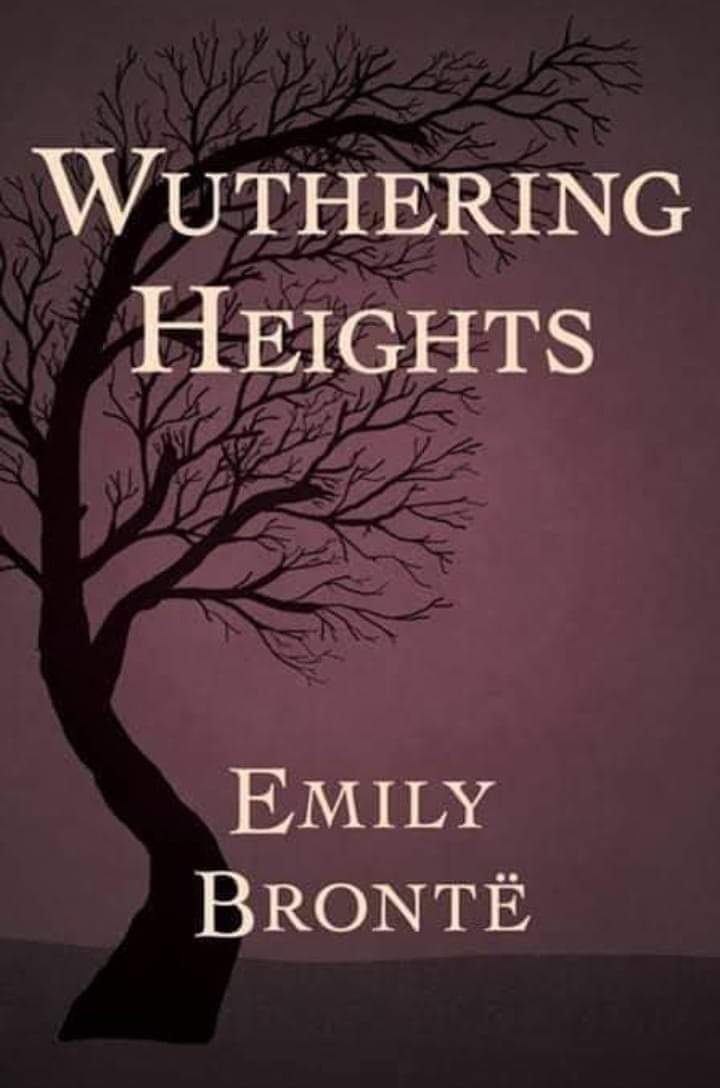“Wuthering Heights” is a novel written by Emily Bronte and was first published in 1847. It is considered a classic of English literature and is renowned for its dark and atmospheric depiction of human emotions and relationships. The novel is set in the desolate moors of Yorkshire, England, and explores themes of love, revenge, social class, and the destructive power of obsession. The plot moves through the lives of Heathcliff and Catherine Earnshaw and the love that they have for each other. Lockwood learns from Nelly that Heathcliff was adopted by Mr. Earnshaw and brought to Wuthering Heights at a young age. Jealous of the care he received, Earnshaw’s son, Hindley, treated him unkindly. It was Hindley’s sister, Catherine, who extended friendship to Heathcliff and defended him against Hindley’s tyranny. They often walked together across the moors, and her company brought deep solace to him. During one of their excursions, they reached Thrushcross Grange, owned by Mr. Linton. The harsh weather forced them to approach the Lintons, who sneered at Heathcliff for his appearance and behavior. Catherine was given shelter, but Heathcliff had to walk back to Wuthering Heights in inclement weather. Upon the advice of Mrs. Linton, Catherine severed her friendship with Heathcliff, as his company could pollute her. Catherine stayed back at the Grange, where she was taught the sophisticated manners of an upper-class lady, and grew closer to Edgar Linton. Upon her return, she decided to marry Edgar. Heathcliff overheard her decision shared with Nelly and left Wuthering Heights.
Summary:
The story begins with Mr. Lockwood, a wealthy gentleman and new tenant at Thrushcross Grange, who becomes intrigued by his mysterious landlord, Heathcliff. Lockwood becomes even more interested after a bizarre encounter with a ghostly apparition at Wuthering Heights, the neighboring estate owned by Heathcliff.
Lockwood then seeks to unravel the history behind Wuthering Heights and its inhabitants by interacting with the housekeeper, Nelly Dean. Through her narrative, we are transported back in time to witness the entangled lives of Heathcliff and the Earnshaw and Linton families.
Heathcliff, an orphaned boy, was brought to Wuthering Heights by Mr. Earnshaw, who raised him alongside his own children, Hindley and Catherine. Catherine and Heathcliff form an intense bond and develop a deep love for each other. However, their relationship is complicated by the rigid social hierarchies of the time and Catherine’s desire to marry into a higher class. Catherine ends up marrying Edgar Linton of Thrushcross Grange, which deeply wounds Heathcliff.
Consumed by his unrequited love for Catherine and his desire for revenge, Heathcliff embarks on a path of destruction. He uses his newfound power and wealth to torment those who have wronged him. He forcefully marries Isabella Linton, Edgar’s sister, and treats her abusively. After Catherine’s death, Heathcliff becomes obsessed with the idea of being reunited with her, even in death.
The novel follows the consequences of these actions, as well as the experiences of the next generation, who are caught in the crossfire of the destructive forces unleashed by Heathcliff.
Critical Analysis:
“Wuthering Heights” has been widely studied and debated due to its complex themes and unique narrative structure. The novel challenges conventional Victorian notions of love and morality, provoking both admiration and controversy.
One of the central themes explored in the novel is the destructive nature of love. Bronte portrays love as a powerful force that can lead both to profound happiness and devastating misery. Catherine and Heathcliff’s passionate but troubled relationship is a prime example of this. Their love is all-consuming, but it ultimately destroys not only them but also those around them. Bronte questions the idea of love as a purely positive force and suggests that it can be manipulative, possessive, and even violent.
The novel also delves into the effects of social class and its restrictions on individuals. Heathcliff’s status as an outsider and his inability to rise above his lowly origins drive him to seek revenge and gain power over those who have oppressed him. Bronte highlights the injustice of social hierarchies and exposes the damage caused by the divisions between the wealthy and the poor.
Another significant aspect of “Wuthering Heights” is its portrayal of nature as a powerful force that reflects the characters’ emotions and inner turmoil. The harsh and desolate moors surrounding Wuthering Heights mirror the intense and tumultuous emotions experienced by the characters. Bronte skillfully uses the setting to enhance the atmospheric and haunting tone of the novel.
Themes
Social Class/ Structure
The theme of social class is woven into the novel as an implicit observation of Victorian England. With women as the obedient lot before the patriarch of the family and no agency, Bronte’s Catherine is a revolutionary character. She displays affection for Heathcliff, but this affection is tainted by class consciousness. She suffers for staying untruthful to her heart and confesses her love before him. Heathcliff is a waif who comes to the moors with Mr. Earnshaw and earns his favors. His dark complexion and sunken eyes irk Hindley and the Lintons, taking him to be uncouth and uncivilized. More than the rejection from society, it is the rejection by Catherine that spurns his decision to leave and earn a higher station in life.
Family
Family is a major theme of Wuthering Heights. The two main families are the Earnshaws and the Lintons. These families bear contrasting values- passion and gentleness. The Earnshaws are passionate, shown through both Catherine and Hindley and their treatment of Heathcliff. The Lintons are the quintessential representatives of Victorian morality and gentleness, teaching Catherine to behave like a lady. They even consider Heathcliff as an evil presence. Both the families are seats of pride, ego, and alienation.
Hate and Revenge
Heathcliff hates as fiercely as he used to love Cathy, and most of his actions are motivated by a desire of vengeance. Throughout the novel, he resorts to exact some form of retribution from all those who, in his mind, had wronged him: Hindley (and his progeny) for mistreating him, and the Lintons (Edgar and Isabella) for taking Cathy away from him.
Oddly, despite his all-consuming love for Cathy, he is not particularly nice towards her daughter, Catherine. Instead, while assuming the role of the stereotypical villain, he kidnaps her, forces her to marry his sickly son, and generally mistreats her.
In conclusion, “Wuthering Heights” is a profound and complex novel that explores themes of love, revenge, social class, and the destructive power of obsession. Bronte’s masterful storytelling and layered characters have cemented the novel’s place in literary history, making it a timeless classic.











